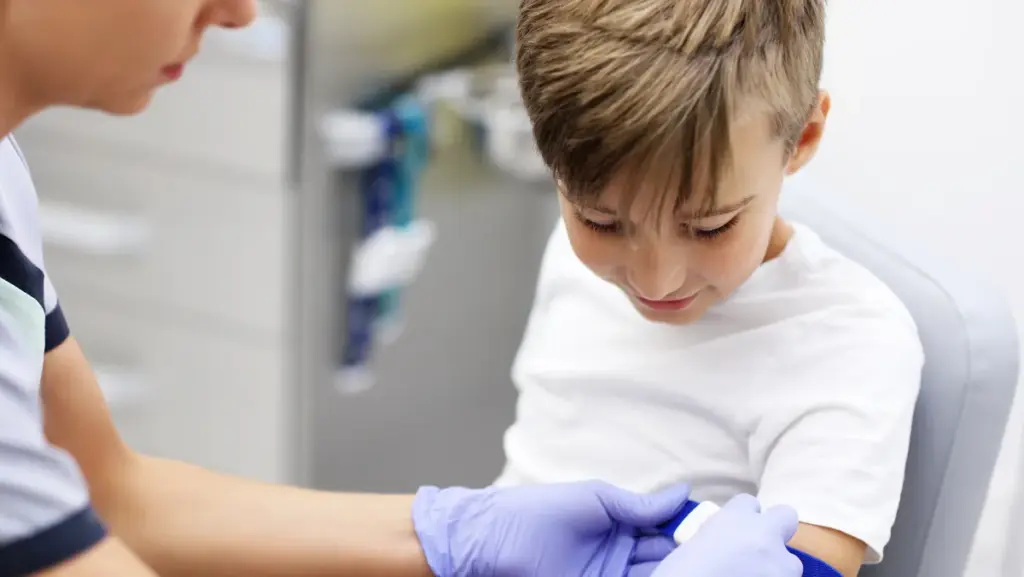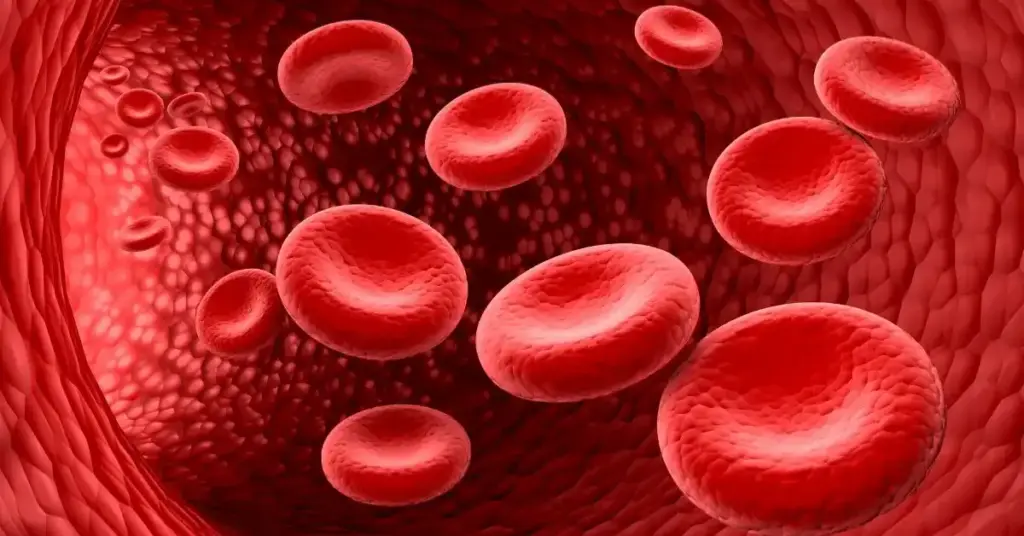
Trauma and sports injuries are common among individuals who lead active lifestyles, ranging from professional athletes to recreational participants. These injuries can affect bones, muscles, tendons, or ligaments and may result from a sudden impact or repetitive stress. Prompt and appropriate care is essential to prevent long-term complications and ensure a full recovery. Advances in orthopedic care, physiotherapy, and minimally invasive surgical techniques have significantly improved outcomes, helping individuals regain mobility and return to their regular activities with confidence.
Sports injuries are physical traumas that occur during athletic activities, workouts, or physical training. These injuries often impact the musculoskeletal system, including bones, muscles, ligaments, tendons, and joints. While sports injuries can affect anyone, from amateurs to elite athletes, the causes and severity may vary. Injuries can be acute, such as a sudden fracture or sprain, or chronic, resulting from prolonged overuse and strain on a specific body part.
These injuries usually occur in high-motion areas such as the knees, shoulders, elbows, ankles, and spine. For example, a runner might develop a stress fracture in the foot, while a tennis player might experience tendonitis in the elbow. The intensity of the sport, frequency of practice, and physical preparedness of the individual play significant roles in injury susceptibility.
Quick and accurate diagnosis of sports injuries is essential to determine the best course of treatment. If not addressed properly, even minor injuries can progress into chronic conditions, limiting performance or causing long-term damage. Early rehabilitation, proper rest, and attention to biomechanics can prevent future occurrences and promote optimal recovery. A collaborative care approach involving orthopedic specialists, physiotherapists, and trainers ensures a comprehensive healing journey tailored to the individual.
Sports injuries are classified into different types based on the nature of the trauma and the tissue affected. Understanding these categories helps guide effective treatment and recovery plans. One of the most frequent types is a sprain, which involves stretching or tearing of ligaments—often occurring in the ankles or wrists. Strains, or pulled muscles, are another common injury seen in sports involving rapid movement or heavy lifting.
Fractures are breaks in the bone caused by direct impact or stress and can be either simple or complex. Dislocations, where the ends of bones are forced out of their normal positions, are typically seen in contact sports such as football or basketball. Tendonitis results from inflammation of tendons due to repetitive motion, commonly affecting the shoulders, elbows, or knees. Shin splints, often experienced by runners, result in pain along the shin bone due to overuse.
Each injury requires a specific care plan, and early intervention often determines how quickly and effectively one returns to sport.
The risk of sustaining sports injuries is influenced by a combination of internal and external factors. While some risks are unavoidable, many can be managed or minimized with proper precautions. Inadequate conditioning is a major risk, as weak muscles and joints are more prone to injury. Similarly, skipping warm-up and stretching routines leaves muscles tight and less prepared for dynamic activity.
Athletes with a history of previous injuries are at a significantly higher risk for recurrence, especially if rehabilitation was incomplete. Poor technique, often a result of lack of coaching or fatigue, also leads to improper loading of joints and muscles. Growth spurts in children and adolescents increase vulnerability as bones and soft tissues develop unevenly. Additionally, aging athletes experience natural declines in flexibility and joint stability, elevating injury risk.
Understanding and addressing these risks through proper training, education, and support can drastically reduce the likelihood of injury and foster a safer sporting environment for all.
The causes of sports injuries are often multifactorial, blending biomechanical, environmental, and physiological aspects. One of the most prevalent causes is overtraining, where the body is subjected to excessive physical load without adequate recovery. This can lead to fatigue, muscle imbalance, and eventually injury. Likewise, improper technique during movements such as lifting, jumping, or swinging can stress the joints and ligaments abnormally.
Another major contributor is impact or collision, especially in contact sports like rugby, football, or martial arts, where external force can lead to dislocations, fractures, or soft tissue injuries. Playing on uneven or slippery surfaces increases the risk of falls, twists, and instability. Inappropriate or worn-out footwear and ill-fitting gear also contribute significantly to musculoskeletal issues.
Identifying the specific cause behind each injury is critical in tailoring the treatment and ensuring future prevention. Coaches, trainers, and medical professionals must collaborate to educate athletes on these causative factors for long-term well-being.
The symptoms of sports injuries can range from mild discomfort to severe, debilitating pain. Recognizing these signs early is essential to initiate appropriate treatment and avoid complications. One of the most immediate indicators is sharp or persistent pain at the injury site, especially during movement or weight-bearing. Swelling and visible bruising may also occur, signaling internal bleeding or tissue damage.
Limited range of motion or stiffness often points to joint or ligament involvement, while instability—such as the knee giving way—can indicate a torn ligament. In some cases, a popping sound or sensation at the time of injury may suggest a tendon or ligament tear. Other warning signs include numbness, tingling, or deformity in the affected area.
Monitoring symptoms closely and seeking medical evaluation ensures proper diagnosis, whether it’s a simple sprain or a more severe injury. Delayed treatment can lead to chronic pain, loss of function, and prolonged downtime.
Treatment for sports injuries is individualized based on the nature, severity, and location of the injury. The initial step for acute injuries often involves the RICE protocol—Rest, Ice, Compression, and Elevation. This reduces inflammation and alleviates pain during the early healing phase. Over-the-counter or prescription anti-inflammatory medications may also be used to manage discomfort.
Physical therapy plays a vital role in restoring mobility, flexibility, and strength. Tailored rehabilitation programs help in the progressive recovery of injured tissues. In more serious cases, such as ligament ruptures or fractures, immobilization with splints or casts may be required. Surgical intervention becomes necessary for conditions like ACL tears, complex fractures, or joint dislocations that do not respond to conservative treatment.
Post-treatment, a structured return-to-play plan ensures the athlete re-engages with their sport safely, minimizing the risk of reinjury. Comprehensive care also includes guidance on biomechanics, nutrition, and recovery strategies.
Trauma and sports injuries can have a profound impact on both physical capability and emotional well-being. While they are often seen as part of an active lifestyle, timely intervention and specialized care are critical in preventing long-term complications. From diagnosis to rehabilitation, managing these injuries requires a comprehensive and tailored approach. At Kannappa Memorial Hospital, a dedicated team of orthopedic and sports medicine experts provides cutting-edge care to help individuals recover fully and safely return to their chosen activities. Advanced diagnostics, personalized rehabilitation protocols, and patient-focused care ensure optimal outcomes. Investing in professional treatment is the first step toward reclaiming strength, mobility, and confidence after a sports injury.
Trauma and sports injuries are common among individuals who lead active lifestyles, ranging from professional athletes to recreational participants. These injuries can affect bones, muscles, tendons, or ligaments and may result from a sudden impact or repetitive stress. Prompt and appropriate care is essential to prevent long-term complications and ensure a full recovery. Advances in orthopedic care, physiotherapy, and minimally invasive surgical techniques have significantly improved outcomes, helping individuals regain mobility and return to their regular activities with confidence.
What are Sports Injuries?
Types of Sports Injuries
Risk for Sports Injuries
Causes of Sports Injuries
Symptoms of Sports Injuries
Treatment for Sports Injuries
Conclusion
Sports injuries are physical traumas that occur during athletic activities, workouts, or physical training. These injuries often impact the musculoskeletal system, including bones, muscles, ligaments, tendons, and joints. While sports injuries can affect anyone, from amateurs to elite athletes, the causes and severity may vary. Injuries can be acute, such as a sudden fracture or sprain, or chronic, resulting from prolonged overuse and strain on a specific body part.
These injuries usually occur in high-motion areas such as the knees, shoulders, elbows, ankles, and spine. For example, a runner might develop a stress fracture in the foot, while a tennis player might experience tendonitis in the elbow. The intensity of the sport, frequency of practice, and physical preparedness of the individual play significant roles in injury susceptibility.
Quick and accurate diagnosis of sports injuries is essential to determine the best course of treatment. If not addressed properly, even minor injuries can progress into chronic conditions, limiting performance or causing long-term damage. Early rehabilitation, proper rest, and attention to biomechanics can prevent future occurrences and promote optimal recovery. A collaborative care approach involving orthopedic specialists, physiotherapists, and trainers ensures a comprehensive healing journey tailored to the individual.
Sports injuries are classified into different types based on the nature of the trauma and the tissue affected. Understanding these categories helps guide effective treatment and recovery plans. One of the most frequent types is a sprain, which involves stretching or tearing of ligaments—often occurring in the ankles or wrists. Strains, or pulled muscles, are another common injury seen in sports involving rapid movement or heavy lifting.
Fractures are breaks in the bone caused by direct impact or stress and can be either simple or complex. Dislocations, where the ends of bones are forced out of their normal positions, are typically seen in contact sports such as football or basketball. Tendonitis results from inflammation of tendons due to repetitive motion, commonly affecting the shoulders, elbows, or knees. Shin splints, often experienced by runners, result in pain along the shin bone due to overuse.
Each injury requires a specific care plan, and early intervention often determines how quickly and effectively one returns to sport.
The risk of sustaining sports injuries is influenced by a combination of internal and external factors. While some risks are unavoidable, many can be managed or minimized with proper precautions. Inadequate conditioning is a major risk, as weak muscles and joints are more prone to injury. Similarly, skipping warm-up and stretching routines leaves muscles tight and less prepared for dynamic activity.
Athletes with a history of previous injuries are at a significantly higher risk for recurrence, especially if rehabilitation was incomplete. Poor technique, often a result of lack of coaching or fatigue, also leads to improper loading of joints and muscles. Growth spurts in children and adolescents increase vulnerability as bones and soft tissues develop unevenly. Additionally, aging athletes experience natural declines in flexibility and joint stability, elevating injury risk.
Understanding and addressing these risks through proper training, education, and support can drastically reduce the likelihood of injury and foster a safer sporting environment for all.
The causes of sports injuries are often multifactorial, blending biomechanical, environmental, and physiological aspects. One of the most prevalent causes is overtraining, where the body is subjected to excessive physical load without adequate recovery. This can lead to fatigue, muscle imbalance, and eventually injury. Likewise, improper technique during movements such as lifting, jumping, or swinging can stress the joints and ligaments abnormally.
Another major contributor is impact or collision, especially in contact sports like rugby, football, or martial arts, where external force can lead to dislocations, fractures, or soft tissue injuries. Playing on uneven or slippery surfaces increases the risk of falls, twists, and instability. Inappropriate or worn-out footwear and ill-fitting gear also contribute significantly to musculoskeletal issues.
Identifying the specific cause behind each injury is critical in tailoring the treatment and ensuring future prevention. Coaches, trainers, and medical professionals must collaborate to educate athletes on these causative factors for long-term well-being.
The symptoms of sports injuries can range from mild discomfort to severe, debilitating pain. Recognizing these signs early is essential to initiate appropriate treatment and avoid complications. One of the most immediate indicators is sharp or persistent pain at the injury site, especially during movement or weight-bearing. Swelling and visible bruising may also occur, signaling internal bleeding or tissue damage.
Limited range of motion or stiffness often points to joint or ligament involvement, while instability—such as the knee giving way—can indicate a torn ligament. In some cases, a popping sound or sensation at the time of injury may suggest a tendon or ligament tear. Other warning signs include numbness, tingling, or deformity in the affected area.
Monitoring symptoms closely and seeking medical evaluation ensures proper diagnosis, whether it’s a simple sprain or a more severe injury. Delayed treatment can lead to chronic pain, loss of function, and prolonged downtime.
Treatment for sports injuries is individualized based on the nature, severity, and location of the injury. The initial step for acute injuries often involves the RICE protocol—Rest, Ice, Compression, and Elevation. This reduces inflammation and alleviates pain during the early healing phase. Over-the-counter or prescription anti-inflammatory medications may also be used to manage discomfort.
Physical therapy plays a vital role in restoring mobility, flexibility, and strength. Tailored rehabilitation programs help in the progressive recovery of injured tissues. In more serious cases, such as ligament ruptures or fractures, immobilization with splints or casts may be required. Surgical intervention becomes necessary for conditions like ACL tears, complex fractures, or joint dislocations that do not respond to conservative treatment.
Post-treatment, a structured return-to-play plan ensures the athlete re-engages with their sport safely, minimizing the risk of reinjury. Comprehensive care also includes guidance on biomechanics, nutrition, and recovery strategies.
Trauma and sports injuries can have a profound impact on both physical capability and emotional well-being. While they are often seen as part of an active lifestyle, timely intervention and specialized care are critical in preventing long-term complications. From diagnosis to rehabilitation, managing these injuries requires a comprehensive and tailored approach. At Kannappa Memorial Hospital, a dedicated team of orthopedic and sports medicine experts provides cutting-edge care to help individuals recover fully and safely return to their chosen activities. Advanced diagnostics, personalized rehabilitation protocols, and patient-focused care ensure optimal outcomes. Investing in professional treatment is the first step toward reclaiming strength, mobility, and confidence after a sports injury.
Yes, many sports injuries are considered traumatic, especially when they occur suddenly due to high-impact forces or accidents during physical activity. Injuries such as fractures, dislocations, and ligament tears are examples of trauma sustained in sports. While some injuries may develop gradually, those involving immediate pain, swelling, or functional loss are typically categorized under trauma and require prompt evaluation.
Sports injuries often stem from various preventable and unpreventable causes. Five common contributors include lack of proper warm-up, overuse of specific muscle groups, poor training techniques, inadequate protective gear, and collisions or falls. Each of these factors can compromise an athlete’s safety, making it important to adopt preventive strategies, maintain fitness levels, and use proper equipment while participating in physical activities.
Mental recovery is as important as physical healing after a sports injury. It involves acknowledging the emotional impact, setting realistic recovery goals, and maintaining a positive mindset. Engaging with support systems like counselors, teammates, or coaches helps manage anxiety or frustration. Visualization techniques, mindfulness, and staying connected with the sport in non-physical ways also aid in rebuilding confidence and motivation during rehabilitation.





